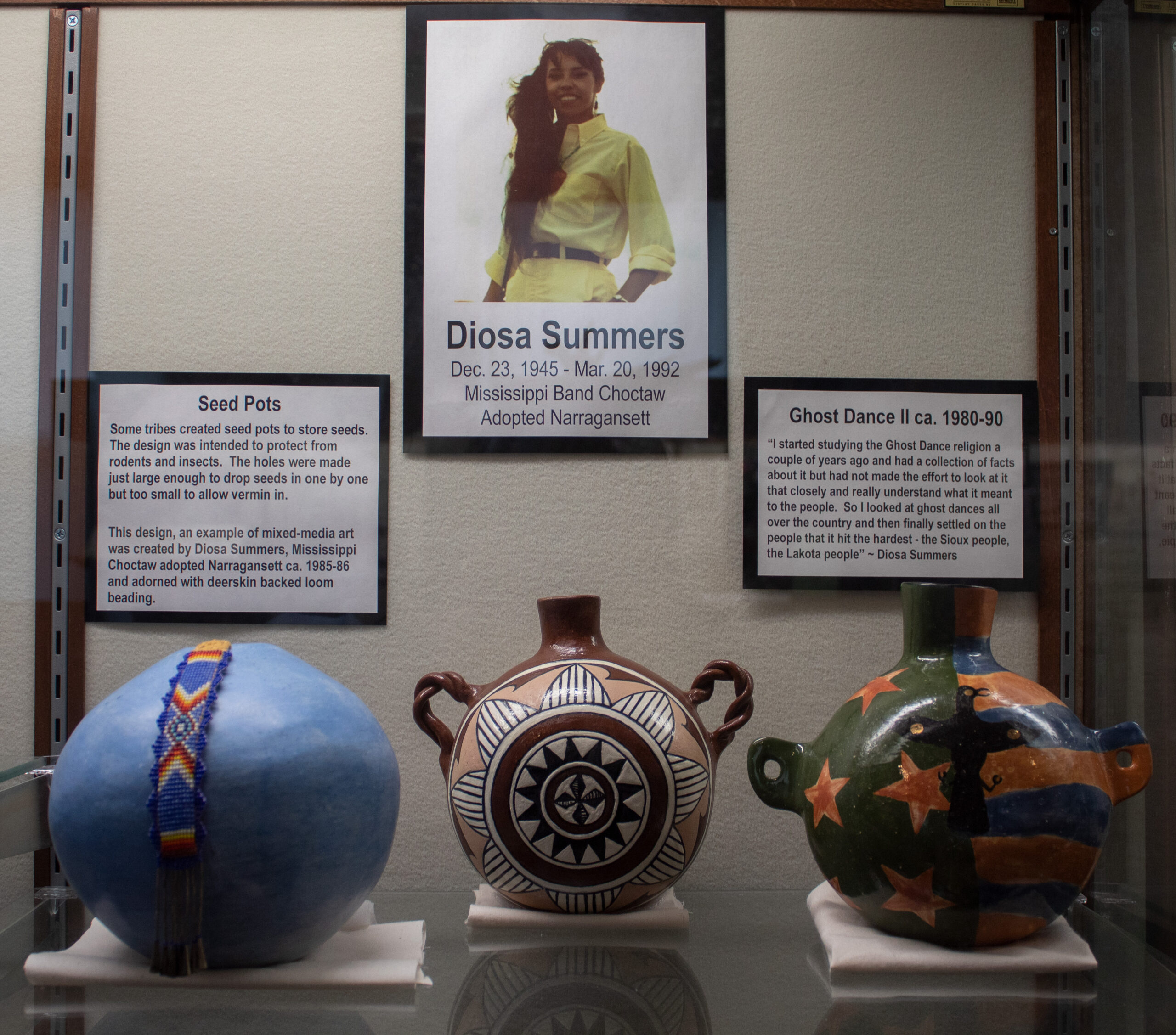Pictured: Artifacts from Tomaquag museum. PHOTO CREDIT: Hannah Charron | Staff Photographer
According to the Seaconke Wampanoag Tribe, they were originally called the “Wampanoo” by their people.
The Tribe continued to say that they occupied what is now called East Providence, mainly Warren, RI and used to be part of Massachusetts until 1636. In 1636, Refugee Roger Williams founded Providence Plantations or the Colony of Rhode Island until 1776 when it was granted statehood.
Mike Markley, the author of “The Seaconke Wampanoag Tribal History,” claims that the “Wampanoo” or “Wampanoag” means “People of the First Light” because they were the first to see the light of day as the sun rose to the new world.
“They were warm and inviting people confident in themselves and strong in their belief and understanding of their system of things,” Markley said.
From the “What to Wear?” section of the Plimoth Patuxet Museum webpage, it states that for men, older boys, young girls and women, the most common piece of clothing was the breechcloth. Breechcloth was made from soft deerskin and worn between the legs with each end tucked under a belt and hanging down as flaps on the front and back.
They added in the “Build a Home” section that, same as the Narragansett Tribe, they live in Wetus built with saplings. But, they were rounder and had a hole at the top for smoke to escape. Also, instead of woven mats on the floor for the summer, they sewed them from cattails.
According to Elizabeth Thomas, a writer from Liberty Park Music, music was an essential part of the Wampanoag tribe. There were songs for ceremonies, recreation, expression, healing, spirituality, and passing down history.
“Songs serve many purposes, from invoking spirits, to asking for rain, luck, or guidance to healing the sick,” Thomas said.
She continued to say that the instruments they used were drums, rattles, flutes and whistles. These were made from either plants or animal bones. Bone whistles were usually made from bird bones and are used strictly as sacred items in ceremonies. Rattles were made from gourds and used at healing ceremonies.
“The Wampanoag water drum is small and can easily be held in one hand,” Thomas said. “It is made from a hollowed out piece of wood covered with deer hide.”
The staff of Only Tribal, a website that talks about tribal facts and traditional tribal arts, say that Wampanoag arts and crafts consisted of exquisite beadwork, wood carving, basket weaving, and pottery.
“In fact, the wampum beads that they crafted out of white and purple shell beads bore poignant designs and pictures, narrating a story or representing a person’s family,” The Only Tribal staff said.
Also, facial paintings and body decorations with tribal tattoos further manifest their mastery in art.
Nancy Elredge, a member of the Nauset Wampanoag and Penobscot Tribe, said that today, there are around 4,000 to 5,000 members left living in New England. Also, some relatives were found in the Caribbean Islands.
“These people are descendants of native Wampanoag people who were sent into slavery after a war between the Wampanoag and the English,” Elredge said.
She continued to say that they still keep their traditions to continue their way of life.
“We, as the People, still continue our way of life through oral traditions (the telling of our family and our Nation’s history, ceremonies, the language, song and dance, social gatherings, hunting and fishing,” Elredge said.
To learn more, go to the Plimoth Patuxet Museum in Plymouth, MA or the Tomaquag Museum in Exeter, RI.





